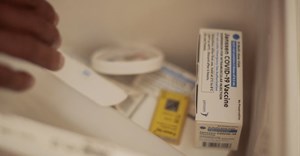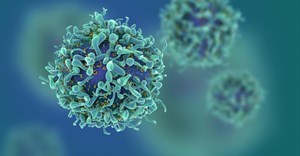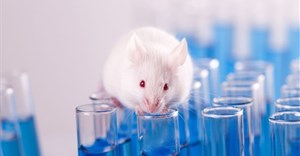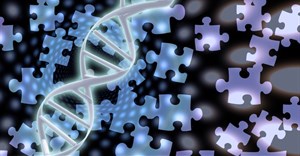Subscribe & Follow
DNA - made in the lab
A team of researchers at the University of Toyama in Japan, led by Masahiko Inouye, claim to have created the world's first stable artificial DNA molecules, made from synthesised nucleosides that resemble their natural counterparts.
DNA is made up of four basic building blocks, or bases, which code proteins used in cell functioning and development. While other researchers have developed DNA molecules with a few select artificial parts, the Japanese team put together four completely new, artificial bases inside the framework of a DNA molecule, creating unusually stable, double-stranded structures resembling natural DNA. According to the scientists, the artificial DNA acts like the real thing, and even forms right-handed duplexes with complimentary artificial strands. They hope to one day use their discovery to create a new biological information storage system that functions outside of the cell. Artificial DNA could be used advantageously instead of natural DNA due to its stability against naturally occurring enzymes and its structural diversity.
Limitless possibilities
The unique chemistry of these artificial bases and DNA structures, coupled with their high stability, offers limitless possibilities for new biotechnology materials and applications, such as the creation of powerful DNA computers. These computers are constructed by using DNA as software and enzymes as hardware, rather than traditional silicon-based components. By mixing DNA and enzymes in this way and monitoring the reactions, complex computer calculations can be performed. DNA molecules are similar to computer hard drives in the way they save information about an individual's genes. However, they have the potential to perform calculations much faster than today's fastest man-made computers. The reason for this is that, unlike a traditional computer, calculations are performed simultaneously - similar to a parallel computing schematic - as it takes advantage of numerous different DNA molecules attempting to test various possibilities at once.
In addition, unlike today's PCs, DNA computers require minimal or no external power sources as they run on internal energy produced during cellular reactions. There is a huge amount of potential for a computer that does not need to be plugged in; the implications this has for laptops and true mobility are endless.
Because of these reasons, scientists all over the world are looking for ways in which DNA may be integrated into a computer chip to create a biochip that will make standard computers faster and more energy efficient. DNA computers could potentially be the future of 'green IT'.
Keep an open mind
Although the idea of artificial DNA and DNA computers may seem farfetched, the concept is entirely plausible if one keeps an open mind: although DNA solutions may seem impossibly complex, there are few people who actually understand how silicon-based computing works. In addition, current systems are based on the binary system, and DNA computers would be similar in nature: they could leverage the pre-existing relationships between the four bases that are the core of every DNA molecule.
However, the more sinister connotations of artificial DNA computing - even though unfounded - remain fixed in users' minds. Therefore, since the first concept of DNA computing came about in 1994, researchers have been trying to develop artificial versions of DNA. Since the components of artificial DNA that have been created by Inouye's team do not exist in natural DNA, it is nearly impossibly for them to react together, eliminating any threat of mutation.
Perhaps the giants should take a look at it
The discovery of artificial DNA by Inouye and the Japanese team could be vital to the furthering of DNA computing, as it would allow researchers to build custom DNA structures that are optimised for computing. Unfortunately, the current method used for constructing the DNA structures creates only short strands that are not long enough to encode information. The technology for building artificial DNA is still extremely new, however, and is only the first step (albeit a huge one) towards using DNA as an external information storage system.
DNA computers will not be replacing today's standard PCs anytime soon as there is still years of research to be conducted before it can be determined if this technology will be fruitful in computing. That said, as DNA computing becomes more high profile, it may be beneficial for hardware technology giants such as Apple, Dell, HP, IBM, Intel and Sun Microsystems to begin investing in research which emphasises artificial DNA and its potential applications.
Ultimately, DNA computers are still in their infancy, but, if successful, will be capable of storing much more data than a regular PC and would be considerably more energy efficient and smaller in size. Given these huge benefits, investors should not rule DNA computers out of their strategies purely because they seem too implausible. Those vendors that participate in this revolutionary research could be pioneers in the development of DNA microprocessors and computers, if and when the technology is found to be viable.





















